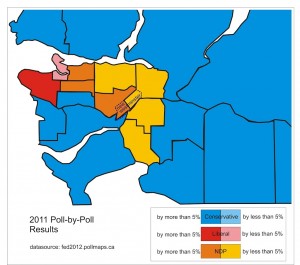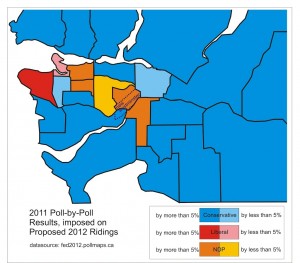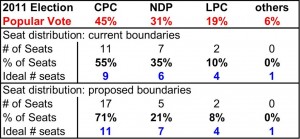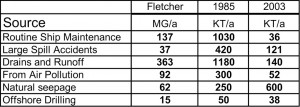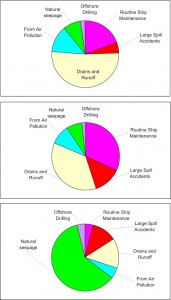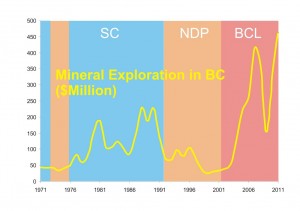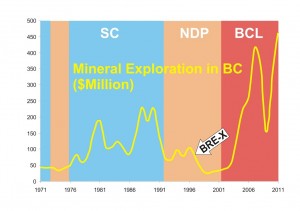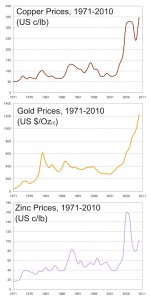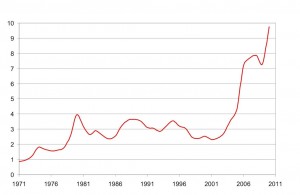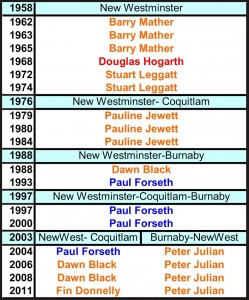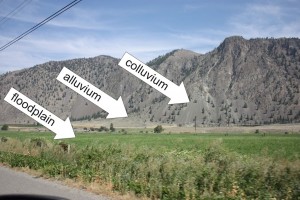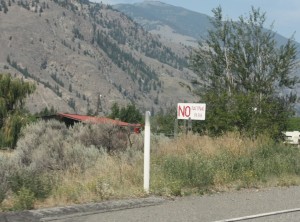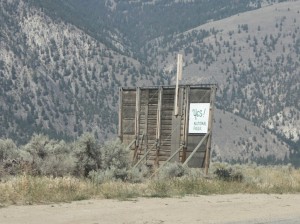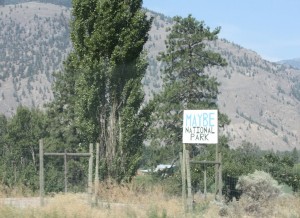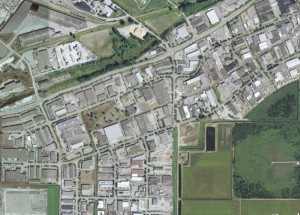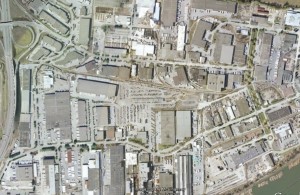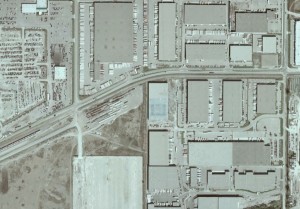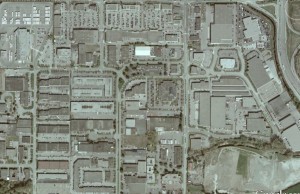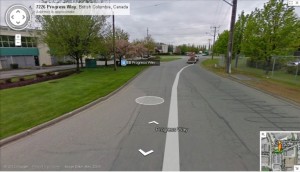Not long after writing this post, I was made aware of this website.
The idea is simple: they took poll-by-poll results from the last two elections and re-ran the elections with the new Electoral Districts being proposed across Canada. The results locally are interesting.
Here are the existing ridings for the Lower Mainland, and the results from the 2011 Federal election. I shaded ridings by winning Party, dark if they won handily, and pale if the Party won a close one (“close” I arbitrarily set at a 5% lead over the next closest rival, which is pretty much within pre-election polling error).
And here is the same area, with the proposed riding boundaries for the next Federal Election, and how the 2011 election would have ended, assuming everyone voted for the same party, regardless of the newly-drawn riding boundaries:
Remember, this reflects exactly the same number of voters, and exactly the same votes: so no change at all in the percentage of popular vote for any party. What does change is who goes to Ottawa.
With the existing boundaries, MetroVancouver will be represented by 11 CPC, 7 NDP, and 2 LPC MPs. With the proposed boundaries, the same area will be represented by 17 CPC, 5 NDP, and 2 LPC MPs. Exactly the same votes, and the result sees the Conservatives gain 6 seats, the NDP lose two. Are we supposed to believe this is a coincidence?
There are a couple of caveats that should be acknowledged when looking at this data.
This revised data is useful mostly in the extreme case: it is highly unlikely that the 3,000 votes in NDP-leaning Queensborough will have any influence on the 30,000 votes in Conservative-dominated Richmond once the two are put in the same riding. You can see this in complete lack of change “around the edge” of the map, where solid Conservative leads would not be threatened by any change in boundaries, and the East Side of Vancouver will always be NDP.
However, what the impact on the old New Westminster-Coquitlam riding is less certain. According to last election’s poll-by-poll results, the new riding of Port Moody – Coquitlam the loss of the strong-NDP Sapperton polls would hurt Fin Donnelly much more than the loss of Conservative-friendly Queens Park polls, and the Conservative-leaning Coquitlam vote would swing the riding to that party by the thinnest of margins- about 0.95%, or less than 400 votes.
This brings up the bigger supposition: that people vote strictly along party lines, and those party lines never shift. We know that isn’t true for much of the population. Fin Donnelly is a great NDP Candidate, and appealed to a lot of people in Conservative-leaning areas, just as Diana Dilworth appealed to many people in NDP-leaning areas. Fin now has real incumbency behind him, the NDP are gaining in the polls, and there is no guarantee that Dilworth will run again, Fin could still win the new Coquitlam-Port Moody riding, or a “Star Candidate” for the Conservatives could win by more than the thin margin above. Candidates and Pary matter: which is why a distribution that doesn’t fairly represent the popular vote is such a problem.
This may sound like an NDP partisan whinge, but if there is one thing upon which we should all agree it is that we want the representation in Ottawa to represent, as best as possible, the popular vote. That is the fundamental basis for Representative Democracy, and the entire purpose of this Electoral District Redistribution: to adapt the House of Commons to the growing and shifting population. The Growth of Greater Vancouver means we are getting 4 more seats. However, if we want to fairly represent this population, how should those seats be distributed?
Look at this table I made, again of data from the PollMaps database:
For the combined 20 ridings in the above maps, the popular vote in the 2011 election was 45% for the Conservatives, 31% for the NDP, 19% for the Liberals, and the Greens an everyone else split the other 6% of the vote.
That resulted in 11 seats for the CPC (55% of the total seats available), 7 for the NDP (35%), 2 for the Liberals (10%), and none for anyone else. The Blue numbers are the number of seats each party should have got, based on a distribution of seats that matches their popular vote. Overall, the distribution was not perfect, but in the grand scheme, it wasn’t too bad for a first-past-the-post system.
Now look at the proposed boundaries data. Ideally, redistribution should push us towards the ideal here. Instead, the over-representation of the Conservatives get bigger (71% of seats from 45% of the vote!), while the NDP and Liberals get less representation and the situation for the other parties doesn’t change. All of the extra seats go the party that is already overrepresented, plus seats stripped from a party already under-represented, while doing nothing to help the other under-represented parties!
This is an opportunity lost. With proportional representation in European model, those 4 new seats could be reserved for representatives from parties that are underrepresented.
The Conservatives can keep their 11 seats: the number out of 20 that they won, and the number out of 24 that represents their popular vote.
The NDP keep their 7 seats (well, lose one, but are granted a “proportional seat” for no net gain): this is one more than they won out of 20, but fairly represents the number out of 24 that represents their popular vote.
The Liberals keep their 2 seats, and are granted 2 “proportional seats” to bring heir total to 4: the number out of 24 that represents their popular vote.
The final proportional seat is given to the Green party, as out of the 6% “others”, about 80% of that was for the Greens, meaning 5% of the total popular vote.
This way, we meet the “ideal” number of seats, as per popular vote. Of course, this is a local example, but the same results can be drawn at the Provincial Level, and at the National level. All it would take is the wholesale re-writing of the Canadian Constitution and Parliamentary system. We have three years until the next election, let’s get started!
